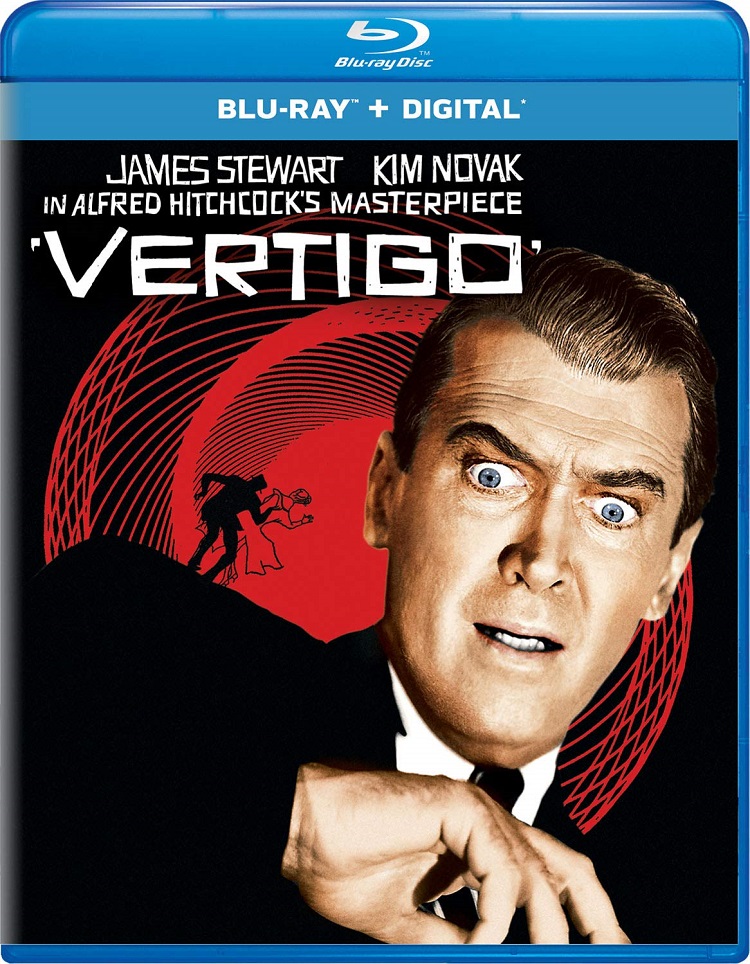
I started collecting movies sometime in college. Initially, I swore to only purchase really interesting movies – stone-cold classics and interesting arthouse films – but soon enough I was buying all sorts of horrible things if they were cheap enough (somewhere I still have a copy of To Gillian on Her 37th Birthday, bought unseen from the used Blockbuster bin for less money than it would have cost to rent it). Whenever I had some extra money, I’d head to the mall to browse the aisles at the Suncoast Motion Picture Company.
On one of those visits, I came across a special edition of Vertigo. This was still in the VHS days so special editions were a rare thing. Vertigo was part of the so-called Five Hitchcocks (which also included Rope, Rear Window, The Trouble with Harry, and The Man Who Knew Too Much) the only movies in which Hitchcock himself owned the distribution rights and therefore went out of public circulation until his death in the early 1980s. Eventually his daughter Patricia sold the rights and finally people were once again able to see these films.
In 1996, Vertigo was given a full restoration with cleaned up color and a controversial new soundtrack. Desiring to give it a new audio mix with DTS digital surround sound, they created new foley effects. It was this restoration I found myself staring at at the mall. I was relatively new to Hitchcock then, having seen Rebecca, Psycho, North by Northwest, a few episodes of his television series, and maybe one or two other films. I knew his reputation as a master of suspense and so I plopped down my money on Vertigo and hoped it would be as amazing as the copy on the cover suggested.
I was disappointed.
I didn’t get it. I literally didn’t understand what was going on through half the film. There was a mystery and a murder, but not any real suspense. Good guy James Stewart was kind of a jerk. This was not the Hitchcock film I was used to. I wasn’t alone. Critics were very mixed on the film at the time of release and audiences stayed away in droves.
Over time, critical opinion changed and in the most recent Sight & Sound poll of critics and filmmakers it finally beat out Citizen Kane for the greatest movie ever made. My opinion of it has grown over the years as well and I’ve come to truly love it. It’s still not my favorite film ever made, nor even my favorite Hitchcock, but it is an incredible piece of cinema.
Stewart plays Scotty a former police detective who, as we see in the film’s stunning opening sequence, suffers from acrophobia – a fear of heights. He retires after allowing a fellow policeman fall to his death trying to rescue him from a rooftop. He is financially independent and likes hanging around his former girlfriend Midge (Barbara Bel Geddes) and generally loafing about. An old school chum, Gavin Elster (Tom Helmore), rings him up one day and asks him to follow his wife Madeline (Kim Novak) for a few days as she’s been acting strangely. She’s been acting like she’s possessed by Carlotta Valdez, the mistress of a wealthy man who went insane and committed suicide many years before.
Scottie agrees and the next day he follows Madeline around San Francisco where she visits the grave of Carlotta, views a painting of her in a museum, and throws herself into the San Francisco Bay. Scottie rescues her and takes her to his home. Later, he takes her to Muir Woods, to the ocean, and to a Spanish mission outside the city. He questions her about her obsession with Carlotta and her jumps into the bay. They kiss. She runs up the bell tower and jumps from the top. His acrophobia keeps him from rescuing her.
After a stint in a mental hospital, Scottie recovers but spends his time revisiting places Madeline used to go. About a year later, he meets Judy, a woman who looks remarkably like Madeline. He courts her and slowly begins shaping her into the image of Madeline. He buys her dresses that look like hers, gets her to dye and cut her hair, transforming her into the dead woman.
The plot is a bit convoluted but the film is rich in symbolism, deep in meaning, and full of technical achievement. It is Hitchcock’s most personal film dealing with themes of obsession and the many ways in which the film industry, including Hitchcock himself, treat women as objects.
He pioneered the camera movement in which the camera zooms in as it is physically moving backwards giving us the famous dolly zoom. It contains some of his most interesting compositions including one from above the bell tower in which we see a group of nuns climbing up on the roof to bring down Madeline’s body while Scotty sneaks away from the other side. In one of his best scenes, Scotty embraces the fully transformed Judy as the camera encircles them and we see the background change from her apartment room to the livery of the mission where they embraced and back again.
Critics have endlessly pondered the film’s many symbols and meanings. It is a film rife with imagery that allows multiple interpretations, all of which can be argued for eternity. Every time I see it I come away with something different.
TCM’s “Noir Alley” host Eddie Muller gives an informative talk before and after the film. I’ve seen Vertigo many times over the years on the small screen but it was an incredible treat to see it projected as it was meant to be seen on the big screen. Don’t miss your chance to do the same.